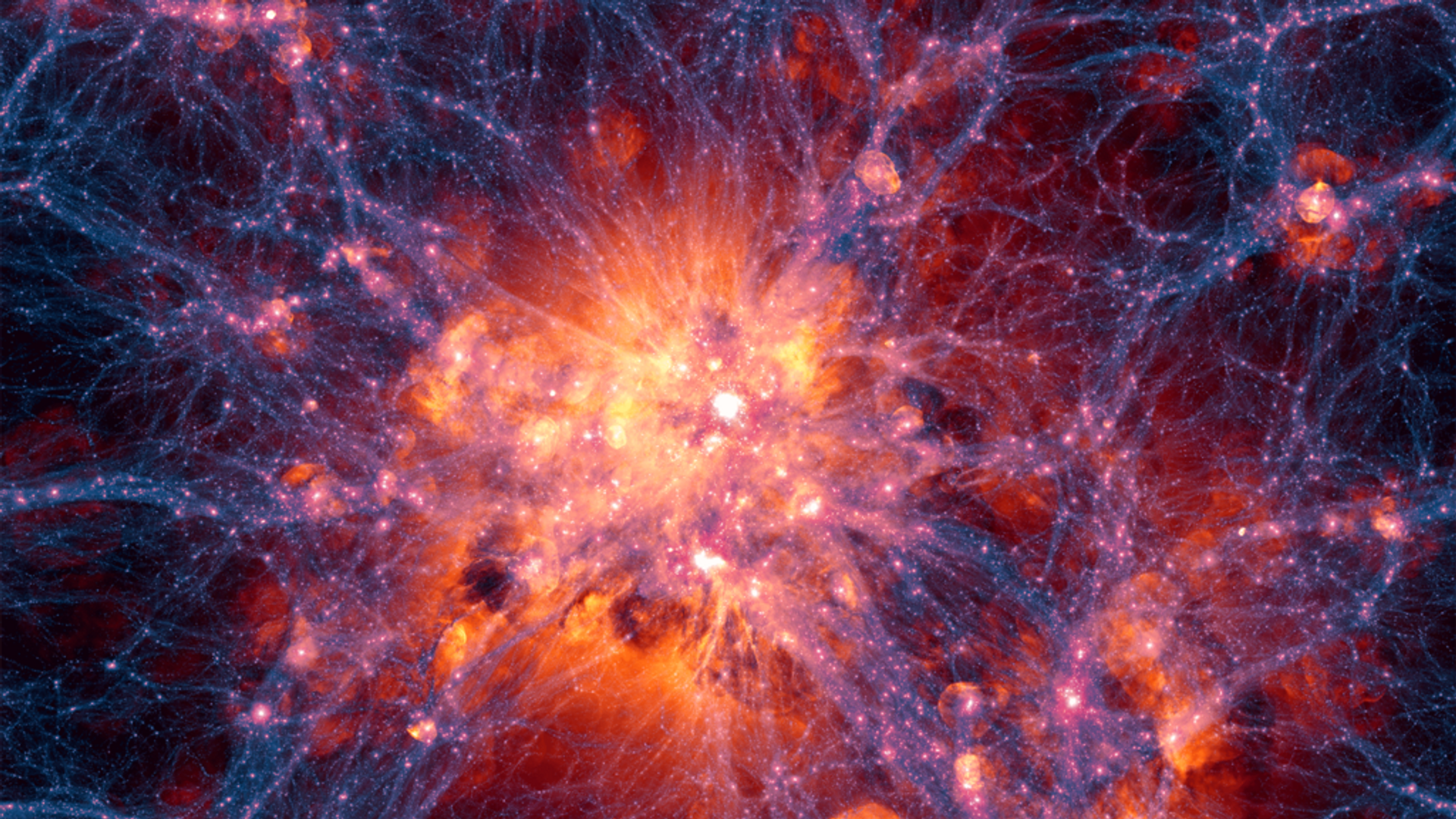https://sputnikglobe.com/20220823/self-interaction-of-dark-matter-may-reveal-clues-of-its-existence-study-suggests-1099901383.html
Self-Interaction of Dark Matter May Reveal Clues of Its Existence, Study Suggests
Self-Interaction of Dark Matter May Reveal Clues of Its Existence, Study Suggests
Sputnik International
Taking a closer look at the distribution of mass in galaxy clusters may supposedly yield a hint of the existence of dark matter existence due to the difference... 23.08.2022, Sputnik International
2022-08-23T12:13+0000
2022-08-23T12:13+0000
2022-08-23T12:13+0000
science & tech
dark matter
interaction
theory
study
https://cdn1.img.sputnikglobe.com/img/107852/75/1078527561_0:225:1024:801_1920x0_80_0_0_c987d55d8596b1b9af4a6dcd85f97edf.png
While scientists are yet to obtain direct evidence of the existence of dark matter, a new study recently published on the preprint online repository arXiv suggests that a certain type of this enigmatic substance may leave subtle clues pointing to its existence.The new research postulates that some of the dark matter may be self-interacting, i.e. its particles may interact with one another, however slightly.Therefore, since self-interacting and non-interacting types of dark matter behave differently when piling up in the cores of galaxy clusters, detailed observations of the distribution of mass in galaxy clusters may yield a hint of dark matter’s existence, Space.com notes.The media outlet points out, however, that the self-interacting dark matter theory is itself yet to be confirmed, and that evidence of such self-interaction may come in the form of, for example, a galaxy whose disk has been warped in a way that can only be explained by the presence of self-interacting dark matter.Also, since self-interacting dark matter is expected to “clump up” in a manner different from that of non-interacting dark matter, it may also affect the rotation curves of galaxies, Space.com adds, and thus tip off observant astronomers.
https://sputnikglobe.com/20220520/galaxies-devoid-of-dark-matter-formed-during-massive-collision-billions-of-years-ago-study-says-1095669632.html
Sputnik International
feedback@sputniknews.com
+74956456601
MIA „Rossiya Segodnya“
2022
Sputnik International
feedback@sputniknews.com
+74956456601
MIA „Rossiya Segodnya“
News
en_EN
Sputnik International
feedback@sputniknews.com
+74956456601
MIA „Rossiya Segodnya“
Sputnik International
feedback@sputniknews.com
+74956456601
MIA „Rossiya Segodnya“
science & tech, dark matter, interaction, theory, study
science & tech, dark matter, interaction, theory, study
Self-Interaction of Dark Matter May Reveal Clues of Its Existence, Study Suggests
Taking a closer look at the distribution of mass in galaxy clusters may supposedly yield a hint of the existence of dark matter existence due to the difference in behavior between self-interacting and non-interacting dark matter.
While scientists are yet to obtain direct evidence of the existence of dark matter, a new study recently published on the preprint online repository arXiv suggests that a certain type of this enigmatic substance may leave subtle clues pointing to its existence.
The new research postulates that some of the dark matter may be self-interacting, i.e. its particles may interact with one another, however slightly.
Therefore, since self-interacting and non-interacting types of dark matter behave differently when piling up in the cores of galaxy clusters, detailed observations of the distribution of mass in galaxy clusters may yield a hint of dark matter’s existence, Space.com notes.
The media outlet points out, however, that the self-interacting dark matter theory is itself yet to be confirmed, and that evidence of such self-interaction may come in the form of, for example, a galaxy whose disk has been warped in a way that can only be explained by the presence of self-interacting dark matter.
Also, since self-interacting dark matter is expected to “clump up” in a manner different from that of non-interacting dark matter, it may also affect the rotation curves of galaxies, Space.com adds, and thus tip off observant astronomers.


